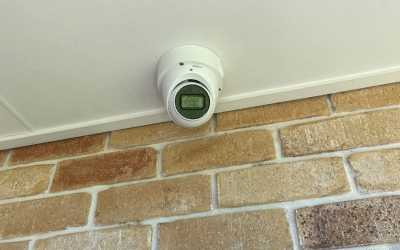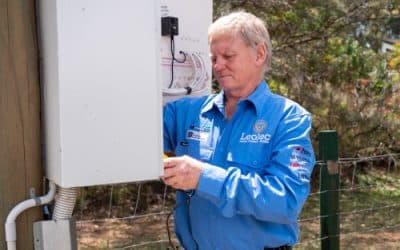Brisbane’s landscape is punctuated with a rich tapestry of heritage buildings, each echoing the tales of yesteryear and contributing to the city’s unique architectural character. These structures, ranging from grand colonial homes to ornate public buildings, encapsulate the historical essence of a bygone era. However, maintaining these buildings, especially in terms of electrical systems, presents a unique set of challenges and complexities.
Performing electrical work on Brisbane’s heritage buildings is not merely a matter of technical execution but a delicate dance of preserving history while integrating modern convenience. The process is fraught with regulatory hurdles and technical intricacies that demand a nuanced approach. This article aims to shed light on these challenges, offering insight and guidance to those tasked with the sensitive job of updating electrical infrastructures in these cherished structures.
By exploring the intersection of history and modernity, this piece will serve not just as an informative read but as a comprehensive guide, underpinning the importance of meticulous planning and specialised expertise in the preservation and enhancement of Brisbane’s historical landmarks. Through careful examination of the regulations, technical hurdles, and the expertise required for such tasks, we aim to empower property owners, contractors, and all stakeholders with the knowledge needed to undertake these essential renovations thoughtfully and effectively. This is essential for ensuring that Brisbane’s architectural heritage is not only preserved but continues to function safely and efficiently in the contemporary world.
Understanding Heritage Buildings in Brisbane
Heritage buildings are structures that are deemed significant due to their historical, architectural, or cultural value. In Brisbane, these buildings are not only remnants of the city’s past but also keystones that offer insight into the region’s developmental narrative. They symbolise a physical connection to history, embodying the styles, materials, and aesthetic sensibilities of the periods in which they were constructed. Protecting these buildings is crucial as it helps maintain the city’s character and provides a tangible link to its diverse historical layers.
Among Brisbane’s tapestry of heritage sites, several stand out for their distinct architectural styles and historical importance:
- Brisbane City Hall: Opened in 1930, this building is famous for its imposing clock tower inspired by St Mark’s Campanile in Venice. It serves not only as a ceremonial and administrative space but also as a cultural hub that has witnessed many of the city’s significant events.
- Customs House: Known for its distinctive copper dome, Customs House is a symbol of Brisbane’s maritime history and colonial past. It was once the gateway for goods and people entering Queensland and now functions as a cultural and educational facility.
- The Old Windmill: Built by convicts in 1828, this is Brisbane’s oldest surviving building. Despite its original utilitarian purpose as a grain mill, the structure has served various roles, from a signal station to a broadcasting tower, reflecting its adaptability and resilience.
These examples represent just a fraction of the heritage sites that enrich Brisbane’s cityscape. Each building tells a unique story, not just in its aesthetic and design but also through its historical functions and transformations over the years. Understanding and appreciating these landmarks are pivotal in recognising the broader historical and cultural narratives of Brisbane.
Regulations for Electrical Work in Heritage Buildings
When undertaking electrical work in heritage buildings in Brisbane, a specific set of legal frameworks and regulations must be navigated to ensure both the preservation of the structure’s historical integrity and the safety of its modern use. The regulatory landscape is designed to protect these valuable assets while accommodating necessary upgrades to meet current electrical standards.
Role of the Brisbane City Council and Other Regulatory Bodies
The Brisbane City Council plays a pivotal role in overseeing modifications to heritage buildings. This involves the careful assessment of proposed electrical works to ensure they do not compromise the building’s historical value. In addition to local regulations, state and national heritage bodies may also have jurisdiction over such renovations, depending on the building’s heritage listing status. These bodies ensure that all modifications comply with the Australian Building Codes Board (ABCB) and other relevant heritage conservation guidelines.
Collaborating with these regulatory authorities from the initial stages of planning can provide crucial guidance and prevent potential legal complications, ensuring that the electrical upgrades comply with both safety standards and heritage preservation requirements.
Compliance and Safety Standards
Specific electrical standards and codes are paramount when dealing with heritage structures to ensure that all electrical work is safe, functional, and minimally invasive to the building’s fabric. Australian Standard AS/NZS 3000, known as the Wiring Rules, provides a framework that must be adhered to during any electrical installation to ensure safety and efficiency. For heritage buildings, these standards often require adaptations to avoid structural damage and maintain aesthetic integrity.
The process of obtaining permits for electrical work in heritage buildings is stringent and detailed. Property owners or contractors must submit comprehensive plans that outline the intended electrical work, demonstrating how it will comply with heritage regulations. These plans are reviewed by heritage officers and electrical inspectors who assess the impact on the heritage value of the building. Approval of these permits often hinges on the ability to prove that modern interventions, such as wiring and fixtures, can be integrated without detracting from the historical and architectural significance of the structure.
Navigating these regulations requires a thorough understanding of both the technical aspects of electrical work and the nuanced requirements of heritage conservation. This dual expertise is essential for successfully upgrading electrical systems in heritage buildings while preserving the cultural and historical narratives they embody. By adhering to these standards and engaging with regulatory bodies early in the project, stakeholders can ensure that their restoration efforts are both compliant and conducive to preserving Brisbane’s heritage for future generations.
Challenges of Electrical Renovations in Heritage Buildings
Electrical renovations in heritage buildings present a unique set of challenges that require a delicate balance between modern efficiency and historical integrity. These challenges stem from the inherent complexities of updating old systems embedded within structures that were often built with entirely different construction standards and technologies.
Technical Difficulties in Updating Old Electrical Systems
One of the primary technical challenges is the age and condition of the existing electrical infrastructure. In many heritage buildings, the original wiring systems can be outdated, inefficient, and sometimes even hazardous. Replacing these systems involves not only technical skill but also a deep understanding of historical construction methods. Modern electrical systems must be integrated seamlessly into structures that were not designed to accommodate them, often requiring custom solutions to ensure that the new wiring does not compromise structural integrity or visible aesthetics.
Navigating these upgrades often involves working within tight spaces, through thick masonry walls, and under heritage-listed finishes, all while ensuring that the building remains compliant with current electrical safety standards. The risk of damage to irreplaceable historical materials adds a significant layer of complexity and responsibility to the work.
Balancing Modern Efficiency and Historical Integrity
The second major challenge is balancing the need for modern efficiency with the preservation of historical integrity. This balance is crucial not only for the conservation of the building but also for its functionality as a livable or usable space. Modern electrical solutions, such as LED lighting or updated heating systems, need to be installed in a way that they do not detract from the historical character of the building. This often means using custom fixtures that mimic the style of the era, cleverly concealing wiring, or employing less invasive installation techniques.
Furthermore, energy efficiency is a significant consideration, as heritage buildings are typically less energy-efficient than modern structures. Upgrading them to be more energy-efficient, while necessary, requires innovative approaches that do not alter their historic fabric. For example, using ultrathin wiring solutions or integrating smart technology in a way that is reversible, should future technologies or restoration needs arise, preserves the building’s historical value.
Addressing these challenges effectively demands a highly specialised approach that combines skills from both the electrical and heritage conservation fields. Electrical contractors undertaking this work must not only be adept at their trade but also sensitive to the historical significance of the structures they are working on. This ensures that electrical renovations enhance the building’s functionality without eroding its historical essence, allowing these cherished structures to serve contemporary needs while respecting their past.
Innovative Solutions in Electrical Heritage Conservation
Navigating the complexities of electrical work in heritage buildings requires not only a respect for their historical integrity but also an embrace of modern technology and innovative practices. These innovations make it possible to enhance the functionality of heritage buildings while maintaining their character.
Technologies and Methods for Sensitive Electrical Refurbishments
Sensitive electrical refurbishments in heritage buildings benefit greatly from advanced technologies and methods that respect the fabric of the building while providing up-to-date electrical solutions. Techniques such as using wireless electrical systems or low-impact installation methods can minimise the need for invasive structural changes. For example, the use of conduit systems that match the existing architecture allows for modern wiring to be installed without damaging historic plasterwork or masonry.
Additionally, employing reversible modifications is a key strategy. This approach ensures that any installations can be removed in the future without leaving permanent marks or alterations, preserving the building’s integrity over the long term. This is crucial in maintaining the eligibility of the building for heritage status and ensuring compliance with heritage conservation guidelines.
How Modern Technology Can Be Harmoniously Integrated into Heritage Buildings
Integrating modern technology into heritage buildings is a careful balance of aesthetics and function. One effective strategy is the use of historically styled fixtures that incorporate modern lighting technology, such as LED bulbs that mimic the warmth and ambience of traditional incandescent lighting. This allows property owners to enjoy the benefits of energy efficiency without compromising the historical aesthetic of their lighting fixtures.
Advanced smart technology can also play a role, enabling better control over heating, cooling, and lighting systems through smart thermostats and switches that can be discretely integrated into existing setups. These systems improve the usability and comfort of the building while keeping the technological elements subtle and out of sight.
Sustainable Electrical Practices
Sustainability is increasingly important in all fields of construction and renovation, including in the realm of heritage buildings. Implementing sustainable electrical practices in these renovations not only supports environmental goals but also enhances the building’s longevity and efficiency.
Examples of energy-efficient practices suitable for heritage buildings include:
- LED Lighting: Replacing traditional lighting with LED options which consume less power and have a longer lifespan, all while producing less heat, thus posing a lower risk to sensitive materials within heritage sites.
- Motion Sensors and Timers: Installing motion sensors and timers can help reduce energy consumption by ensuring that lights and other electrical systems are only active when needed.
- Solar Power Integration: Where possible, integrating solar panels in non-intrusive locations can significantly reduce a building’s carbon footprint and energy costs. These panels can be designed to blend with the building’s aesthetics or hidden from view to maintain the structure’s historical appearance.
By incorporating these sustainable and innovative solutions, electrical renovations in heritage buildings can be carried out in a way that respects their historical significance while making them more environmentally friendly and adaptable to modern needs. This approach not only preserves the past but also ensures that these buildings remain viable and functional for future generations.
Impact of Improper Electrical Work on Heritage Buildings
Improper electrical work in heritage buildings can have devastating effects, not only compromising the safety of the structure but also potentially causing irreversible damage to its historical elements. Understanding the risks associated with non-compliant electrical work underscores the critical importance of engaging the right experts for any renovation in heritage settings.
Potential Risks and Consequences of Non-compliant Electrical Work
The risks of inadequate or inappropriate electrical installations in heritage buildings are significant. One of the most immediate risks is the potential for electrical fires. Older structures often contain materials that are more flammable than those used in modern construction, and faulty wiring can easily lead to overheating or sparks that ignite these materials. Additionally, improper electrical work can lead to electrical shocks or other safety hazards, endangering both the occupants and the public.
Beyond the immediate safety risks, there are also long-term consequences to consider. Non-compliant electrical installations can cause physical damage to the historical fabric of the building. For example, drilling into original plasterwork to install new fittings can degrade its structural integrity. Invasive electrical upgrades can also destroy original fixtures and finishes that are central to the building’s heritage value, potentially leading to a loss of historical authenticity and a reduction in the building’s cultural significance and market value.
Importance of Choosing the Right Experts for Electrical Heritage Conservation
Given these risks, selecting the right professionals for electrical work in heritage buildings is paramount. This selection process should prioritise contractors who not only have the necessary electrical qualifications but also specific experience and training in heritage conservation.
Experts in heritage electrical work are familiar with the unique challenges posed by these buildings. They know how to navigate the regulatory landscape, understand the architectural nuances of heritage structures, and can implement electrical solutions that minimise the impact on the building. These professionals use their specialised knowledge to design and execute electrical upgrades that comply with both safety standards and heritage preservation guidelines.
Choosing the right expert also involves verifying their credentials and past work. Property owners should seek out professionals who can provide references or case studies from similar projects, demonstrating their ability to handle the complexities of heritage conservation. Collaborating with these specialists ensures that all electrical work is done with a high level of care and expertise, safeguarding the building’s historical integrity while updating it to meet modern electrical standards.
In summary, the impact of improper electrical work on heritage buildings can be both dangerous and costly. By investing in the right expertise, property owners can avoid these risks, ensuring that their heritage properties are preserved and protected for future generations while still providing safe, efficient, and modern electrical functionalities.
Benefits of Professional Electrical Renovation in Heritage Buildings
Professional electrical renovations in heritage buildings provide a multitude of benefits, ranging from enhanced safety and functionality to the preservation and potential increase in property value. Undertaking these renovations with the guidance of experts ensures that the work is not only compliant with current standards but also sensitive to the building’s historical significance.
Enhancing Safety and Functionality
The primary benefit of professional electrical renovation is the significant enhancement of safety within heritage buildings. Old, outdated wiring and electrical systems not only pose a risk of fire and electrical hazards but often cannot support the energy demands of modern usage. By updating these systems, property owners can mitigate these risks, ensuring a safer environment for occupants and visitors.
Moreover, modern electrical systems improve the functionality of the building. Upgrades such as efficient lighting, better heating solutions, and modern conveniences like internet and multimedia wiring are crucial for adapting heritage buildings for contemporary use. These improvements can make heritage properties more attractive for commercial or residential purposes, broadening their usability and ensuring they continue to serve functional purposes in today’s society.
Preserving and Increasing the Value of Heritage Properties
Electrical renovations can also significantly impact the preservation and enhancement of a heritage building’s value. Properly executed renovations that respect and maintain the architectural integrity of the property can increase its market value. This is particularly relevant in heritage-rich cities like Brisbane, where the charm and character of historical buildings are highly prized.
Furthermore, maintaining a heritage building with up-to-date and compliant electrical work can lead to savings in maintenance costs. Modern, efficiently running systems are less likely to require frequent repairs and can operate more cost-effectively, reducing overall upkeep expenses. This aspect is especially appealing to potential buyers or investors who may be concerned about the costs associated with maintaining older properties.
By investing in professional electrical renovations, property owners not only ensure the immediate benefits of safety and functionality but also contribute to the long-term stewardship of the building’s historical value. These renovations make the buildings more appealing and viable for modern uses, ensuring that they remain cherished and functional parts of the urban landscape. Such thoughtful updates underscore the commitment to preserving history while embracing the future, making these heritage sites relevant and useful for generations to come.
Selecting the Right Contractor for Electrical Work
Choosing the right contractor for electrical work in heritage buildings is a decision that should not be taken lightly. The uniqueness of each heritage property, coupled with the specific challenges of preserving its historical integrity while upgrading its functionality, requires a highly specialised approach. Here are key criteria to consider and the reasons why experience and certification in heritage conservation are essential.
Criteria for Choosing an Electrical Contractor Skilled in Heritage Properties
- Specialised Experience: Look for contractors who have a proven track record of working specifically with heritage properties. Experience in this area indicates that they understand the complexities involved and are familiar with the best practices for integrating modern electrical systems without compromising historical integrity.
- Licenses and Certifications: Ensure that the contractor holds all necessary local and national licenses to perform electrical work. Additionally, certifications in heritage conservation or similar qualifications can be a significant indicator of their capability to handle the specific needs of heritage buildings.
- Understanding of Local Regulations: The contractor should have in-depth knowledge of local building and conservation laws. This is crucial as compliance with these regulations ensures that all modifications are legally sound and maintain the heritage status of the building.
- References and Portfolio: Request references and examples of previous projects similar to yours. Reviewing their portfolio can provide insights into the quality and appropriateness of their work, as well as their ability to respect and preserve historical elements.
- Quality of Proposed Materials and Techniques: Evaluate the materials and techniques the contractor plans to use. They should be proposing high-quality, durable solutions that are appropriate for heritage conservation. The use of non-invasive techniques and materials that blend with or mimic the original structures is particularly important.
- Communication and Problem-Solving Skills: Effective communication is essential. The contractor should be approachable, ready to listen to your concerns, and capable of explaining their processes in a way that you understand. Their ability to offer creative solutions to potential problems can also be a good indicator of their expertise.
Importance of Experience and Certification in Heritage Conservation
Experience and certification in heritage conservation are not just formalities; they are crucial for ensuring the contractor is fully equipped to handle the delicate balance required in these projects. Contractors with these qualifications are more likely to:
- Preserve Architectural Integrity: They understand the architectural significance and the historical context of the building, ensuring that all work done respects and maintains these aspects.
- Mitigate Risks: Their expertise helps in identifying potential risks associated with electrical renovations in older buildings and in implementing strategies to mitigate these risks.
- Enhance Property Value: By ensuring that renovations are sympathetic to the original design and historical features, they can enhance or at least maintain the property’s value.
- Ensure Compliance and Safety: Experienced contractors are familiar with the stringent safety standards required in electrical work and the specific conservation guidelines that must be followed in heritage properties.
Selecting the right contractor is crucial not only for the successful integration of new electrical systems but also for the ongoing preservation of the building’s historical significance. By choosing a contractor with the right expertise, experience, and approach, property owners can ensure that their heritage properties are both safe and authentically maintained, ready to stand the test of time while serving modern needs.
Financial Considerations
Undertaking electrical renovations in heritage buildings involves a unique set of financial considerations. The costs can be significantly higher than those for standard buildings due to the specialised labour, materials, and compliance requirements. However, understanding these costs and the availability of financial support can make managing and planning these projects more feasible.
Overview of Potential Costs Associated with Electrical Renovations in Heritage Buildings
- Specialised Labour: The need for skilled contractors with experience in both electrical work and heritage conservation often comes at a premium. These professionals possess a niche skill set that commands higher rates due to their expertise in handling the complex demands of heritage properties.
- Custom Materials and Techniques: Often, materials need to be customised or specially sourced to match the historical context of the building, which can increase costs. Additionally, using techniques that are less invasive and therefore more time-consuming can add to the overall expense.
- Compliance and Permit Costs: Navigating the regulatory landscape involves obtaining necessary permits and possibly consulting with heritage officers or architects specialising in conservation, which can incur additional costs.
- Contingency for Unforeseen Issues: Heritage buildings can hold surprises such as previously unknown structural issues or hazardous materials like asbestos, which may be uncovered during the renovation process. Allocating a contingency budget for these potential issues is crucial.
Information on Grants and Funding Available for Preserving Heritage Properties
Recognising the cultural value of heritage properties, various government bodies and private organisations offer grants and funding opportunities to assist with the costs associated with their preservation. In Brisbane and throughout Australia, property owners can access several forms of financial assistance:
- Local Council Grants: Brisbane City Council, for instance, offers heritage grants to owners for projects that contribute to the conservation of heritage-listed sites. These grants can be used for professional advice as well as for carrying out conservation works.
- State and Federal Funding: The Queensland Heritage Register and the Australian Government provide funding opportunities through various programmes intended to preserve national and state heritage. These funds are often available to projects that demonstrate a commitment to high standards of conservation and public benefit.
- Private Foundations and Trusts: There are several trusts and foundations dedicated to preserving cultural heritage that offer grants or low-interest loans to projects meeting their criteria.
- Tax Incentives: Some jurisdictions offer tax incentives or rebates for work done on heritage properties, which can help offset some of the costs.
For property owners considering electrical renovations in heritage buildings, it is advisable to explore these funding avenues early in the planning process. Many grants have specific application periods and criteria, and understanding these can help in aligning the project’s timeline and scope with the available financial support. Additionally, consulting with financial advisors who have experience in heritage projects can provide valuable guidance on managing these expenses effectively.
By carefully planning and utilising available financial resources, property owners can undertake necessary upgrades that respect and preserve the historical integrity of their heritage properties while managing the associated costs effectively.
Future of Brisbane’s Heritage Buildings
The role of electrical renovations in the preservation and adaptive reuse of Brisbane’s heritage buildings is pivotal as we look towards the future. These renovations not only ensure the buildings remain functional and safe but also contribute significantly to their sustainable use. Understanding the ongoing challenges and opportunities in heritage conservation can help stakeholders navigate the future more effectively.
The Role of Electrical Work in Preservation and Adaptive Reuse
Electrical work is often a central component of adapting heritage buildings for contemporary uses. Whether transforming these buildings into commercial spaces, cultural centres, or residential properties, modern electrical systems are essential for their functionality. Properly executed electrical upgrades ensure these structures can accommodate modern technological needs—such as efficient lighting, climate control, and security systems—while preserving their architectural integrity.
Moreover, electrical renovations can play a crucial role in the sustainability of heritage buildings. By integrating energy-efficient systems and smart technology, these buildings can be made more environmentally friendly, reducing their carbon footprint and operational costs. This not only aligns with global sustainability goals but also enhances the appeal of these properties in today’s eco-conscious market.
Future Challenges and Opportunities in Heritage Conservation
Challenges:
- Technological Integration: As technology advances, integrating new systems without compromising the historical integrity of heritage buildings will remain a challenge. This includes everything from renewable energy solutions to smart building technologies.
- Regulatory Landscapes: Navigating the evolving regulatory environment can be complex, especially as laws and standards change to incorporate new conservation practices and technological capabilities.
- Financial Constraints: The high costs associated with the proper conservation and adaptation of heritage buildings can be a barrier. Securing funding and managing budgets will continue to challenge property owners and conservationists.
Opportunities:
- Innovative Conservation Techniques: Advancements in materials science and engineering offer new ways to preserve and restore heritage structures more effectively and less intrusively.
- Public Engagement and Awareness: Increasing public interest in historical preservation can drive more support and funding for heritage conservation projects. This includes educational programs and community
involvement initiatives that highlight the value of preserving our architectural history.
- Adaptive Reuse Potential: There is growing recognition of the value in adaptively reusing heritage buildings for new purposes. This not only preserves these structures but also revitalises communities and stimulates economic development.
The future of Brisbane’s heritage buildings looks promising if the focus remains on balancing historical preservation with modern functionality. By continuing to innovate in the field of electrical heritage conservation, stakeholders can ensure that these important structures not only survive but thrive in the modern age. Engaging experts, leveraging new technologies, and fostering a community that values historical preservation will be key to overcoming challenges and seizing opportunities in the years to come. This proactive approach will ensure that Brisbane’s heritage buildings remain vibrant and relevant parts of the city’s landscape, cherished for generations to come.
Key Takeaways
Throughout this discussion on the impact of electrical work on Brisbane’s heritage buildings, several critical points have been highlighted to ensure these treasured structures are both preserved and functional for future generations:
- Complex Regulations and Standards: Navigating the mase of local, state, and national regulations is essential for any electrical renovation in heritage buildings. Compliance with these standards ensures safety and preservation of historical integrity.
- Technical Challenges and Solutions: The technical difficulties of updating electrical systems in heritage structures require innovative solutions that balance modern efficiency with historical authenticity. Using advanced, non-invasive technologies and techniques helps maintain the architectural essence of these buildings.
- Importance of Specialist Expertise: Selecting the right contractor with specific experience in heritage properties is crucial. These professionals understand the delicate balance required and are skilled in integrating modern electrical solutions without compromising the building’s historical value.
- Financial Considerations: Understanding the potential costs and available funding options, including grants and incentives, is crucial for managing the financial aspects of electrical renovations in heritage buildings effectively.
- Future Challenges and Opportunities: The preservation and adaptive reuse of heritage buildings face both challenges and opportunities, from technological integration to public engagement. Embracing innovative conservation techniques and adaptive reuse potentials can drive the sustainable future of these buildings.
- Sustainability and Adaptation: Modern electrical renovations play a key role in making heritage buildings sustainable and adaptable to new uses, aligning with both environmental goals and modern requirements.
The careful and professional handling of electrical work in heritage buildings cannot be overstated. As Brisbane continues to grow and evolve, the need to preserve its historical landmarks through appropriate and thoughtful renovations becomes increasingly important. Electrical work, when done correctly, not only enhances the safety and functionality of these buildings but also contributes to their longevity and relevance in our contemporary world.
By investing in quality electrical renovations that respect the heritage and historical significance of these structures, we ensure that they remain vibrant and integral parts of Brisbane’s cultural landscape. The commitment to preserving our architectural heritage while adapting it to meet modern needs is a testament to the city’s respect for its past and its vision for the future. This balance of preservation and innovation is key to maintaining the unique character and history of Brisbane’s heritage buildings for generations to come.







